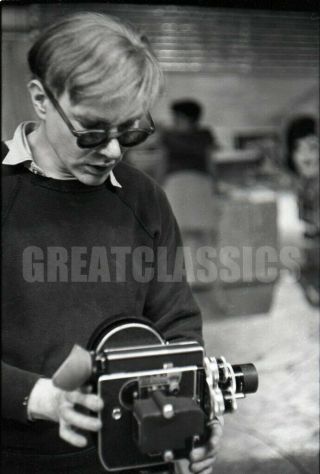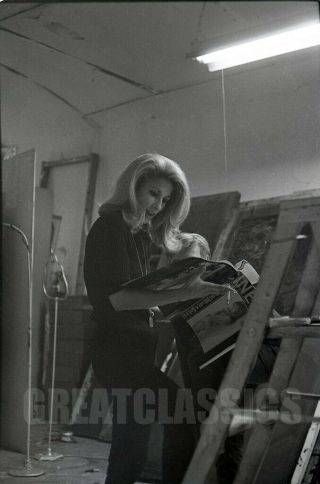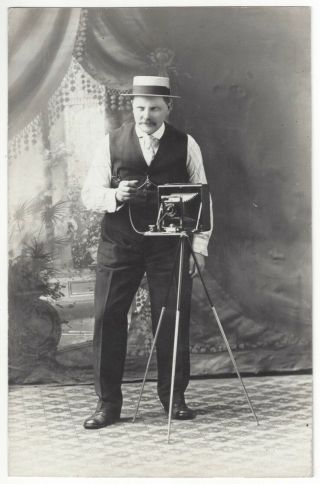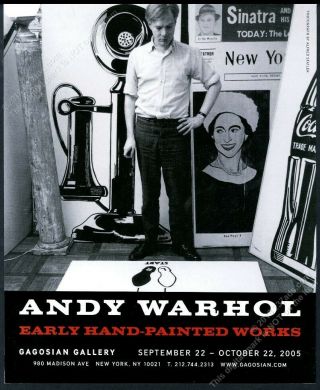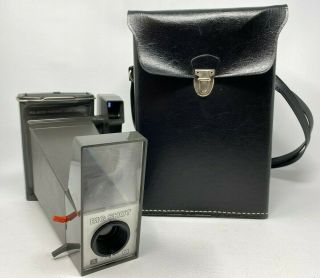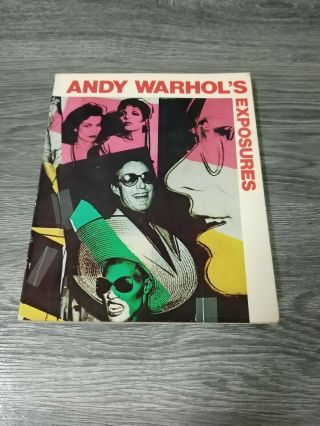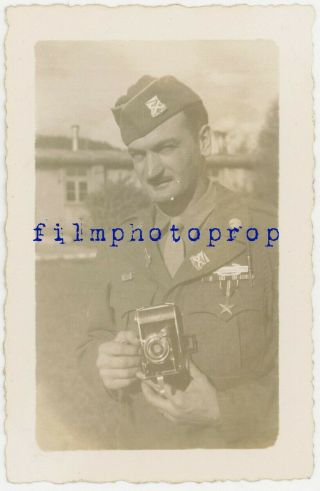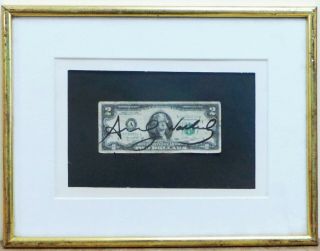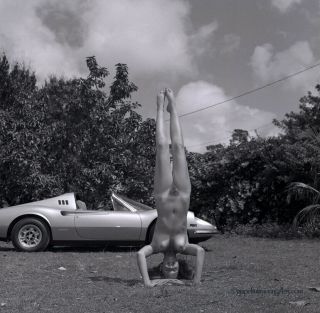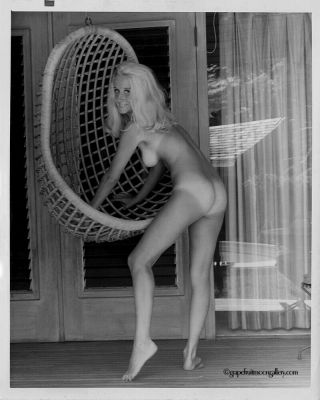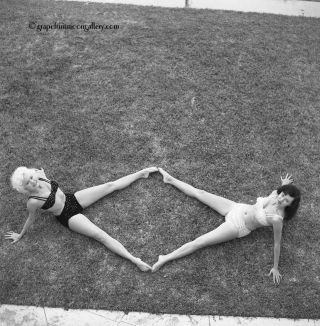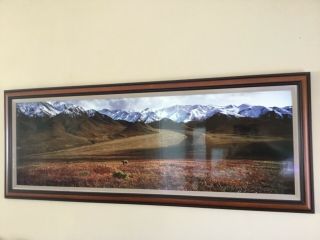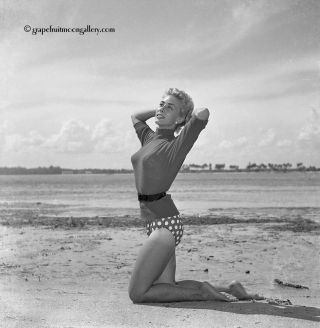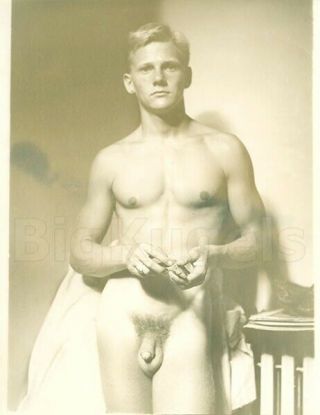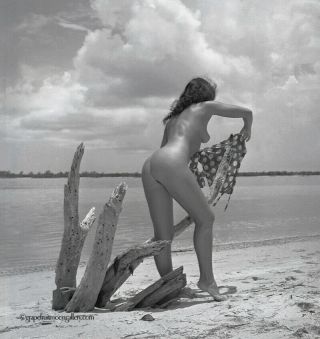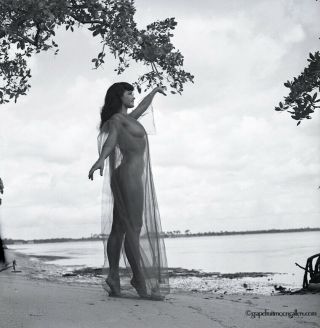ANDY WARHOL W/ CAMERA IN FACTORY STUDIO NYC 1964 CAMERA NEGATIVE PETER BASCH
Item History & Price
This is the earliest look for Warhol with his short hair, posed behind his beloved Bolex 16mm movie camera. This was the model of camera used to shoot all of his early screen test footage used for the films 13 Most Beautiful Women, 13 Most Beautiful Boys, as well as 50 Fantastics and 50 Personalities. A fantastic glimpse of the legendary artist in his working environment!This is the original negative (film) that was in the camera at the time the portrait was taken and is therefore the only one of its kind in existence. (Please note this listing is for a camera negative, not a photograph. The scan is of its positive view.) RIGHTS: The PETER BASCH FAMILY TRUST is the sole and exclusive copyright owner of the listed image(s). No rights are included in this offering.
- SIZE: 35mm- TONE: B&W - CONDITION: Very Fine._______________________________________________________________ CONDITION GRADING Excellent: Very nearly pristine, with no more than trivial flaws. Very Fine: One or two minor defects and only the slightest handling wear. Fine: Minor flaws, with slight handling or surface flaws. Very Good: Slight scuffing, rippling, minor surface impressions. Good: Visibly used with small areas of wear, which may include surface impressions and spotting. Fair: Visibly damaged with extensive wear. SHIPPING TERMS - I ship all items using, what I call, triple protection packing. The photos are inserted into a display bag with a white board, then packed in between thick packaging boards and lastly wrapped with plastic film for weather protection before being placed into the shipping envelope. - The shipping cost for U.S. shipments includes USPS "Delivery Confirmation" tracking. - I am happy to combine multiple wins at no additional cost. Please wait for me to issue the invoice before making payment. PAYMENT TERMS - Please pay within three (3) days of purchase. - I reserve the right to re-list the item(s) if payment is not received within seven (7) days. - California residents - please wait for me to adjust the invoice to include California Sales Tax of 7.5% and 9% for Los Angeles residents. CUSTOMER SERVICE - I will respond to all inquiries within 24 hours. ________________________________________________________________ PETER BASCH (1921-2004) was a German/American glamour photographer who captured thousands of images of the most prominent stars of the 50s and 60s. Peter Basch was born in Berlin, Germany, the only child of Felix Basch and Grete Basch-Freund, both prominent theater and film personalities of the German-speaking world. In 1933 the family came to New York due to fears of rising anti-Jewish sentiment and laws in Germany. The family had US citizenship because Felix's father, Arthur Basch, was a wine trader who lived in San Francisco. After moving back to Germany, Arthur Basch kept his American citizenship, and passed it to his children and, thence, to his grandchildren. When the Basch family arrived in New York in 1933, they opened a restaurant on Central Park South in the Navarro Hotel. The restaurant, Gretel's Viennese, became a hangout for the Austrian expatriate community. Peter Basch had his first job there as a waiter. While in New York, Basch attended the De Witt Clinton High School. The family moved to Los Angeles to assist in Basch's father's career, during which time Basch went to school in England. Upon returning to the United States, Basch joined the Army. He was mobilized in the US Army Air Forces' First Motion Picture Unit, where he worked as a script boy. After the war, he started attending UCLA and started taking photographs of young starlets working with other photographers and film studios. His mother asked him to join her back in New York after she and his father decided that Basch should be a photographer and they obtained a photography studio for their son. For over twenty years, Peter Basch had a successful career as a magazine photographer. He was known for his images of celebrities, artists, dancers, actors, starlets, and glamour-girls in America and Europe. His photos appeared in many major magazines such as Life, Look and Playboy.The Peter Basch Collection includes iconic images of all the major midcentury stars, from Europe and America. These masterful images are a window onto a time we cannot forget, when movie stars stepped out of the studio’s control, and we began to see these larger-than-life performers as full, three-dimensional personalities. Basch’s images capture the heart and spirit of these glamorous performers. Taking pictures in natural light, out in the world, we see these stars as full human beings, not the carefully made-up, studio-approved icons of oldfashioned Hollywood. Basch was able to capture the moments of a human being’s spirit, their mercurial reactions, all the facets that made these magnetic individuals the stars they were. Basch authored and co-authored a number of books containing his photographs including: Candid Photography (1958 with Peter Gowland Basch and Don Ornitz Basch) Peter Basch's Glamour Photography (A Fawcett How-To Book) (1958) Peter Basch photographs beauties of the world (1958) Camera in Rome (1963 with Nathan and Simon Basch) Peter Basch Photographs 100 Famous Beauties (1965) The nude as form & figure (1966) Put a Girl in Your Pocket: The Artful Camera of Peter Basch (1969) Peter Basch's Guide to Figure Photography (1975 with Jack Rey) Thoughts on Peter Basch by his daughter: "My Father, Peter Basch, saw. He looked and he saw. He taught me to see. He taught me to listen and hear. We used to play a game when I was little. He’d say, Michele, look at the street then look at me, what did you see? I would list the cars, red, black, navy; people, fat, tall, thin; children, parents; trees and plants. He would add the detail. A blue car with New York plates, a black car with New Jersey plates. The people were not just tall or small, thin or fat, they wore coats or sweaters, they laughed or were sad. The trees had leaves, were close together, the green was dark, vivid, the sun playing with the shadow. My Father saw. He captured in his mind and on film the unexpected moment in time, the interaction between two people, the look, the thought, the breath that punctuated the decision. My Father was one of the great romantics. He had a true love and appreciation of beauty in its purest form. We would talk about BEAUTY and her differences: natural, Hollywood, young, old and the beauty of communication, interaction, the Beauty of the moment. He recorded the breath in time on film: two ladies in Paris reading the paper, a Dachshund looking around the corner, a chair in front of the Eiffel Tower. My Father saw the thought and seized it for posterity. My Father understood the language light speaks to shadow. He showed me how the sun plays with dark. His favorite moment was at Sunrise when the shadows were long and soft. He saw every hue from white to black and everything in between. He understood the language, taught and published books on Light and Shadow, Form and Figure. I traveled through Europe with my Father. I was his assistant! And proud of it! I was the camera person! Changed the film, made sure the lens was clean, stood in during special poses, helped in the dark room, retouched to refine and perfect. I loved watching him talk and listen. He listened to Jane Fonda, Ursula Andress, Brigit Bardot, Fellini, Mastroiani and so many more. He listened and recorded the answer, the thought, that moment of indecision, realization and Seduction." Film Assignments: 8½ - Fellini Jules et Jim - Truffaut Bijoutiers du Clair de Lune - Vadim The Vice and the Virtue - Vadim Fearless Vampire Killers - Polanski Yesterday, Today and Tomorrow - De Sica Une Femme Est Une Femme Goddard Fear - Rosselini Cartouche - De Broca Giant - Stevens Anne Frank - Stevens Guys and Dolls - Mankiewicz Horse Soldiers - Ford Majority of One - Leroy Walk on the Wild Side - Dmytryk Wild in the Streets - Spear Leonidas - Matte The Day the Fish Came Out - Cocayannis The Pawnbroker - Lumet La Verite - Clouzot La Loi Sacree - Pabst Baby Doll - Kazan Summertime - Lean The 13 Most Beautiful Girls - Warhol The Three Sisters - Bogart Francis of Assissi - Curtiz The Swimmer Perry Cape Fear The Man Who Had Power Over Women The Spy With The Cold Nose Winnetou Mata Hari Exhibitions: 2002 Jewish Museum - Vienna Austria “Vom Grossvater vertrieben” 2002 LEICA Gallery, NYC Portrait of Al Hirschfeld 2001 National Portrait Gallery -- London Dame Elizabeth (Taylor) 2001 Fahey-Klein Gallery, LA Group Show/Great Directors 2001 Museum/City of New York, Al Hirschfeld Exhibit 2000 Museum of Modern Art, NY, Brigitte Bardot 1999 Vienna, Austria – “übersee” 1999 Stadt Museum, Munich, Germany “TWEN” exhibit 1997 Museum of the Moving Image – Grace Kelly 1996 Staley Wise Gallery, NY “Shooting Stars” – one man show 1980s Museum of Modern Art, NY, Sophia Loren LA County Museum "Masters of Starlight" (subsequently traveled to Tokyo & Kyoto, Japan) Stadt Museum, Munich, Germany “AKT” (nudes) __________________________________________________________________ ANDY WARHOL BIO
Andy Warhol (August 6, 1928 – February 22, 1987) was an American artist who was a leading figure in the visual art movement known as pop art. His works explore the relationship between artistic expression, celebrity culture and advertisement that flourished by the 1960s. After a successful career as a commercial illustrator, Warhol became a renowned and sometimes controversial artist. The Andy Warhol Museum in his native city, Pittsburgh, Pennsylvania, holds an extensive permanent collection of art and archives. It is the largest museum in the United States of America dedicated to a single artist.Warhol's artwork ranged in many forms of media that include hand drawing, painting, printmaking, photography, silk screening, sculpture, film, and music. He was a pioneer in computer-generated art using Amiga computers that were introduced in 1985, just before his death in 1987. He founded Interview Magazine and was the author of numerous books, including The Philosophy of Andy Warhol andPopism: The Warhol Sixties. Andy Warhol is also notable as a gay man who lived openly as such before the gay liberation movement. His studio, The Factory, was a famous gathering place that brought together distinguished intellectuals, drag queens, playwrights, Bohemian street people, Hollywood celebrities, and wealthy patrons.Warhol has been the subject of numerous retrospective exhibitions, books, and feature and documentary films. He coined the widely used expression "15 minutes of fame". Many of his creations are very collectible and highly valuable. The highest price ever paid for a Warhol painting is US$100 million for a 1963 canvas titled Eight Elvises. The private transaction was reported in a 2009 article in The Economist, which described Warhol as the "bellwether of the art market". Warhol's works include some of the most expensive paintings ever sold.Andy Warhol (né Andrej Varchola, Jr.) was born on August 6, 1928 in Pittsburgh, Pennsylvania. He was the fourth child of Ondrej Varchola (Americanized as Andrew Warhola, Sr., 1889–1942) and Júlia (née Zavacká, 1892–1972), whose first child was born in their homeland and died before their move to the U.S. Andy had two older brothers, Paul, born about 1923, and John, born about 1925.His parents were working-class Rusyn emigrants from Mikó (now called Miková), located in today’s northeastern Slovakia, part of the formerAustro-Hungarian Empire. Warhol's father immigrated to the United States in 1914, and his mother joined him in 1921, after the death of Warhol's grandparents. Warhol's father worked in a coal mine. The family lived at 55 Beelen Street and later at 3252 Dawson Street in the Oaklandneighborhood of Pittsburgh. The family was Byzantine Catholic and attended St. John Chrysostom Byzantine Catholic Church. Andy Warhol had two older brothers — Pavol (Paul), the oldest, was born in Slovakia; Ján was born in Pittsburgh. Pavol's son, James Warhola, became a successful children's book illustrator. About 1939, he started to collect autographed cards of film stars.In third grade, Warhol had chorea, the nervous system disease that causes involuntary movements of the extremities, which is believed to be a complication of scarlet fever and causes skin pigmentation blotchiness. He became a hypochondriac, developing a fear of hospitals and doctors. Often bedridden as a child, he became an outcast at school and bonded with his mother. At times when he was confined to bed, he drew, listened to the radio and collected pictures of movie stars around his bed. Warhol later described this period as very important in the development of his personality, skill-set and preferences. When Warhol was 13, his father died in an accident.As a teenager, Warhol graduated from Schenley High School in the year 1945. Though not medically diagnosed, Andy may have had dyslexia, which might have contributed to the broadening of his imagination for art and as a result to have perceived the world differently. After graduating from high school, his intentions were to study art education at the University of Pittsburgh in the hope of becoming an art teacher, but his plans changed and he enrolled in the Carnegie Institute of Technology in pursuit of an art career as a commercial illustrator. In 1949, he earned a Bachelor of Fine Arts in Graphic Design.Warhol showed early artistic talent and studied commercial art at the School of Fine Arts at Carnegie Institute of Technology in Pittsburgh, Pennsylvania, (now Carnegie Mellon University). In 1949, he moved to New York City and began a career in magazine illustration and advertising. During the 1950s, he gained fame for his whimsical ink drawings of shoe advertisements. These were done in a loose, blotted-ink style, and figured in some of his earliest showings at the Bodley Gallery in New York. With the concurrent rapid expansion of the record industry and the introduction of the vinyl record, Hi-Fi, and stereophonic recordings, RCA Records hired Warhol, along with another freelance artist, Sid Maurer, to design album covers and promotional materials.Warhol was an early adopter of the silk screen printmaking process as a technique for making paintings. His earliest silkscreening in painting involved hand-drawn images though this soon progressed to the use of photographically derived silkscreening in paintings. Prior to entering the field of fine art, Warhol's commercial art background also involved innovative techniques for image making that were somewhat related to printmaking techniques. When rendering commercial objects for advertising Warhol devised a technique that resulted in a characteristic image. His imagery used in advertising was often executed by means of applying ink to paper and then blotting the ink while still wet. This was akin to a printmaking process on the most rudimentary scale. Warhol's work both as a commercial artist and later a fine artist displays a casual approach to image making, in which chance plays a role and mistakes and unintentional marks are tolerated. The resulting imagery in both Warhol's commercial art and later in his fine art endeavors is often replete with imperfection — smudges and smears can often be found. In his book "POPism" Warhol says, "... when you do something exactly wrong, you always turn up something."He began exhibiting his work during the 1950s. He held exhibitions at the Hugo Gallery, and the Bodley Gallery in New York City and in California his first one-man art-gallery exhibition was on July 9, 1962, in the Ferus Gallery of Los Angeles. The exhibition marked his West Coast debut of pop art. Andy Warhol's first New York solo pop art exhibition was hosted at Eleanor Ward's Stable Gallery November 6–24, 1962. The exhibit included the works Marilyn Diptych, 100 Soup Cans, 100 Coke Bottles and 100 Dollar Bills. At the Stable Gallery exhibit, the artist met for the first time poet John Giorno who would star in Warhol's first film, Sleep, in 1963.It was during the 1960s that Warhol began to make paintings of iconic American objects such as dollar bills, mushroom clouds, electric chairs, Campbell's Soup Cans, Coca-Cola bottles, celebrities such as Marilyn Monroe, Elvis Presley, Marlon Brando, Troy Donahue, Muhammad Ali and Elizabeth Taylor, as well as newspaper headlines or photographs of police dogs attacking civil rights protesters. During these years, he founded his studio, "The Factory" and gathered about him a wide range of artists, writers, musicians, and underground celebrities. His work became popular and controversial. Warhol had this to say about Coca Cola:What's great about this country is that America started the tradition where the richest consumers buy essentially the same things as the poorest. You can be watching TV and see Coca-Cola, and you know that the President drinks Coca-Cola, Liz Taylor drinks Coca-Cola, and just think, you can drink Coca-Cola, too. A Coke is a Coke and no amount of money can get you a better coke than the one the bum on the corner is drinking. All the cokes are the same and all the cokes are good. Liz Taylor knows it, the President knows it, the bum knows it, and you know it.New York's Museum of Modern Art hosted a Symposium on pop art in December 1962 during which artists like Warhol were attacked for "capitulating" to consumerism. Critics were scandalized by Warhol's open embrace of market culture. This symposium set the tone for Warhol's reception. Throughout the decade it became increasingly clear that there had been a profound change in the culture of the art world, and that Warhol was at the center of that shift.A pivotal event was the 1964 exhibit The American Supermarket, a show held in Paul Bianchini's Upper East Side gallery. The show was presented as a typical U.S. small supermarket environment, except that everything in it — from the produce, canned goods, meat, posters on the wall, etc. — was created by six prominent pop artists of the time, among them the controversial (and like-minded) Billy Apple, Mary Inman, and Robert Watts. Warhol's painting of a can of Campbell's soup cost $1, 500 while each autographed can sold for $6. The exhibit was one of the first mass events that directly confronted the general public with both pop art and the perennial question of what art is (or of what is art and what art not art).As an advertisement illustrator in the 1950s, Warhol used assistants to increase his productivity. Collaboration would remain a defining (and controversial) aspect of his working methods throughout his career; this was particularly true in the 1960s. One of the most important collaborators during this period was Gerard Malanga. Malanga assisted the artist with the production of silkscreens, films, sculpture, and other works at "The Factory, " Warhol's aluminum foil-and-silver-paint-lined studio on 47th Street (later moved to Broadway). Other members of Warhol's Factory crowd included Freddie Herko, Ondine, Ronald Tavel, Mary Woronov, Billy Name, and Brigid Berlin (from whom he apparently got the idea to tape-record his phone conversations).During the 1960s, Warhol also groomed a retinue of bohemian eccentrics upon whom he bestowed the designation "Superstars", including Nico, Joe Dallesandro, Edie Sedgwick, Viva, Ultra Violet, Holly Woodlawn, Jackie Curtis and Candy Darling. These people all participated in the Factory films, and some — like Berlin — remained friends with Warhol until his death. Important figures in the New York underground art/cinema world, such as writer John Giorno and film-maker Jack Smith, also appear in Warhol films of the 1960s, revealing Warhol's connections to a diverse range of artistic scenes during this time.On June 3, 1968, Valerie Solanas shot Warhol and art critic and curator Mario Amaya at Warhol's studio. Before the shooting, Solanas had been a marginal figure in the Factory scene. She authored the S.C.U.M. Manifesto, a separatist feminist attack on males. Solanas appears in the 1968 Warhol film I, a Man. Earlier on the day of the attack, Solanas had been turned away from the Factory after asking for the return of a script she had given to Warhol. The script had apparently been misplaced.Amaya received only minor injuries and was released from the hospital later the same day. Warhol, however, was seriously wounded by the attack and barely survived: surgeons opened his chest and massaged his heart to help stimulate its movement again. He suffered physical effects for the rest of his life. The shooting had a profound effect on Warhol's life and art.Solanas was arrested the day after the assault. By way of explanation, she said that Warhol "had too much control over my life." She was eventually sentenced to three years under the control of the Department of Corrections. After the shooting, the Factory scene became much more tightly controlled, and for many the "Factory 60s" ended. The shooting was mostly overshadowed in the media due to the assassination of Robert F. Kennedy two days later.Warhol had this to say about the attack: "Before I was shot, I always thought that I was more half-there than all-there — I always suspected that I was watching TV instead of living life. People sometimes say that the way things happen in movies is unreal, but actually it's the way things happen in life that's unreal. The movies make emotions look so strong and real, whereas when things really do happen to you, it's like watching television — you don't feel anything. Right when I was being shot and ever since, I knew that I was watching television. The channels switch, but it's all television."Compared to the success and scandal of Warhol's work in the 1960s, the 1970s were a much quieter decade, as he became more entrepreneurial. According to Bob Colacello, Warhol devoted much of his time to rounding up new, rich patrons for portrait commissions — including Shah of Iran Mohammad Reza Pahlavi, his wife Empress Farah Pahlavi, his sister Princess Ashraf Pahlavi, Mick Jagger, Liza Minnelli, John Lennon, Diana Ross, and Brigitte Bardot. Warhol's famous portrait of Chinese Communist leader Mao Zedong was created in 1973. He also founded, with Gerard Malanga, Interview magazine, and published The Philosophy of Andy Warhol(1975). An idea expressed in the book: "Making money is art, and working is art and good business is the best art."Warhol used to socialize at various nightspots in New York City, including Max's Kansas City; and, later in the 1970s, Studio 54. He was generally regarded as quiet, shy, and a meticulous observer. Art critic Robert Hughes called him "the white mole of Union Square."With his longtime friend Stuart Pivar, Warhol founded the New York Academy of Art in 1979.Warhol had a re-emergence of critical and financial success in the 1980s, partially due to his affiliation and friendships with a number of prolific younger artists, who were dominating the "bull market" of 1980s New York art: Jean-Michel Basquiat, Julian Schnabel, David Salle and other so-called Neo-Expressionists, as well as members of the Transavantgardemovement in Europe, including Francesco Clemente and Enzo Cucchi.By this period, Warhol was being criticized for becoming merely a "business artist". In 1979, reviewers disliked his exhibits of portraits of 1970s personalities and celebrities, calling them superficial, facile and commercial, with no depth or indication of the significance of the subjects. They also criticized his 1980 exhibit of 10 portraits at the Jewish Museum in New York, entitled Jewish Geniuses, which Warhol — who was uninterested in Judaism and Jews — had described in his diary as "They're going to sell." In hindsight, however, some critics have come to view Warhol's superficiality and commerciality as "the most brilliant mirror of our times, " contending that "Warhol had captured something irresistible about the zeitgeist of American culture in the 1970s."Warhol also had an appreciation for intense Hollywood glamour. He once said: "I love Los Angeles. I love Hollywood. They're so beautiful. Everything's plastic, but I love plastic. I want to be plastic."Warhol died in New York City at 6:32 a.m. on February 22, 1987. According to news reports, he had been making good recovery from a routine gallbladder surgery at New York Hospital before dying in his sleep from a sudden post-operative cardiac arrhythmia. Prior to his diagnosis and operation, Warhol delayed having his recurring gallbladder problems checked, as he was afraid to enter hospitals and see doctors. His family sued the hospital for inadequate care, saying that the arrhythmia was caused by improper care and water intoxication.Warhol's body was taken back to Pittsburgh by his brothers for burial. The wake was at Thomas P. Kunsak Funeral Home and was an open-coffin ceremony. The coffin was a solid bronze casket with gold plated rails and white upholstery. Warhol was dressed in a black cashmere suit, a paisley tie, a platinum wig, and sunglasses. He was posed holding a small prayer book and a red rose. The funeral liturgy was held at the Holy Ghost Byzantine Catholic Church on Pittsburgh's North Side. The eulogy was given by Monsignor Peter Tay.Yoko Ono, John Richardson, and Nicholas Love were speakers. The coffin was covered with white roses and asparagus ferns. After the liturgy, the coffin was driven to St. John the Baptist Byzantine Catholic Cemetery in Bethel Park, a south suburb of Pittsburgh.At the grave, the priest said a brief prayer and sprinkled holy water on the casket. Before the coffin was lowered, Paige Powell dropped a copy of Interview magazine, an Interview t-shirt, and a bottle of the Estee Lauder perfume "Beautiful" into the grave. Warhol was buried next to his mother and father. A memorial service was held in Manhattan for Warhol on April 1, 1987, at St. Patrick's Cathedral, New York.Warhol's will dictated that his entire estate — with the exception of a few modest legacies to family members — would go to create a foundation dedicated to the "advancement of the visual arts". Warhol had so many possessions that it took Sotheby's nine days to auction his estate after his death; the auction grossed more than US$20 million.In 1987, in accordance with Warhol's will, the Andy Warhol Foundation for the Visual Arts began. The Foundation serves as the official Estate of Andy Warhol, but also has a mission "to foster innovative artistic expression and the creative process" and is "focused primarily on supporting work of a challenging and often experimental nature."The Artists Rights Society is the U.S. copyright representative for the Andy Warhol Foundation for the Visual Arts for all Warhol works with the exception of Warhol film stills. The U.S. copyright representative for Warhol film stills is the Warhol Museum in Pittsburgh. Additionally, the Andy Warhol Foundation for the Visual Arts has agreements in place for its image archive. All digital images of Warhol are exclusively managed by Corbis, while all transparency images of Warhol are managed by Art Resource.The Andy Warhol Foundation released its 20th Anniversary Annual Report as a three-volume set in 2007: Vol. I, 1987–2007; Vol. II, Grants & Exhibitions; and Vol. III, Legacy Program. The Foundation remains one of the largest grant-giving organizations for the visual arts in the U.S.By the beginning of the 1960s, Warhol had become a very successful commercial illustrator. His detailed and elegant drawings for I. Miller shoes were particularly popular. They consisted mainly of "blotted ink" drawings (or monoprints), a technique which he applied in much of his early art. Although many artists of this period worked in commercial art, most did so discreetly. Warhol was so successful, however, that his profile as an illustrator seemed to undermine his efforts to be taken seriously as an artist.Pop art was an experimental form that several artists were independently adopting; some of these pioneers, such as Roy Lichtenstein, would later become synonymous with the movement. Warhol, who would become famous as the "Pope of Pop", turned to this new style, where popular subjects could be part of the artist's palette. His early paintings show images taken from cartoons and advertisements, hand-painted with paint drips. Those drips emulated the style of successful abstract expressionists (such as Willem de Kooning). Warhol's first pop art paintings were displayed in April 1961, serving as the backdrop for New York Department Store Bronwit Teller's window display. This was the same stage his Pop Art contemporaries Jasper Johns, James Rosenquist and Robert Rauschenberg had also once graced. Eventually, Warhol pared his image vocabulary down to the icon itself — to brand names, celebrities, dollar signs — and removed all traces of the artist's "hand" in the production of his paintings.To him, part of defining a niche was defining his subject matter. Cartoons were already being used by Lichtenstein, typography by Jasper Johns, and so on; Warhol wanted a distinguishing subject. His friends suggested he should paint the things he loved the most. It was the gallerist Muriel Latow who came up with the ideas for both the soup cans and Warhol's dollar paintings. On November 23, 1961 Warhol wrote Latow a check for $50 which, according to the 2009 Warhol biography, Pop, The Genius of Warhol, was payment for coming up with the idea of the soup cans as subject matter. For his first major exhibition Warhol painted his famous cans of Campbell's Soup, which he claimed to have had for lunch for most of his life. The work sold for $10, 000 at an auction on November 17, 1971, at Sotheby's New York — a minimal amount for the artist whose paintings sell for over $6 million more recently.He loved celebrities, so he painted them as well. From these beginnings he developed his later style and subjects. Instead of working on a signature subject matter, as he started out to do, he worked more and more on a signature style, slowly eliminating the handmade from the artistic process. Warhol frequently used silk-screening; his later drawings were traced from slide projections. At the height of his fame as a painter, Warhol had several assistants who produced his silk-screen multiples, following his directions to make different versions and variations.In 1979, Warhol was commissioned by BMW to paint a Group 4 race version of the then elite supercar BMW M1 for the fourth installment in the BMW Art Car Project. Unlike the three artists before him, Warhol declined the use of a small scale practice model, instead opting to immediately paint directly onto the full scale automobile. It was indicated that Warhol spent only a total of 23 minutes to paint the entire car. Warhol produced both comic and serious works; his subject could be a soup can or an electric chair. Warhol used the same techniques — silkscreens, reproduced serially, and often painted with bright colors — whether he painted celebrities, everyday objects, or images of suicide, car crashes, and disasters, as in the 1962–1963 Death and Disaster series. The Death and Disaster paintings included Red Car Crash, Purple Jumping Man, and Orange Disaster.The unifying element in Warhol's work is his deadpan Keatonesque style — artistically and personally affectless. This was mirrored by Warhol's own demeanor, as he often played "dumb" to the media, and refused to explain his work. The artist was famous for having said that all you need to know about him and his works is already there, "Just look at the surface of my paintings and films and me, and there I am. There's nothing behind it."His Rorschach inkblots are intended as pop comments on art and what art could be. His cow wallpaper (literally, wallpaper with a cowmotif) and his oxidation paintings (canvases prepared with copper paint that was then oxidized with urine) are also noteworthy in this context. Equally noteworthy is the way these works — and their means of production — mirrored the atmosphere at Andy's New York "Factory". Biographer Bob Colacello provides some details on Andy's "piss paintings":Victor ... was Andy's ghost pisser on the Oxidations. He would come to the Factory to urinate on canvases that had already been primed with copper-based paint by Andy or Ronnie Cutrone, a second ghost pisser much appreciated by Andy, who said that the vitamin B that Ronnie took made a prettier color when the acid in the urine turned the copper green. Did Andy ever use his own urine? My diary shows that when he first began the series, in December 1977, he did, and there were many others: boys who'd come to lunch and drink too much wine, and find it funny or even flattering to be asked to help Andy 'paint'. Andy always had a little extra bounce in his walk as he led them to his studio.Warhol's first portrait of Basquiat (1982) is a black photosilkscreen over an oxidized copper "piss painting".After many years of silkscreen, oxidation, photography, etc., Warhol returned to painting with a brush in hand in a series of over 50 large collaborative works done with Jean-Michel Basquiat between 1984 and 1986. Despite negative criticism when these were first shown, Warhol called some of them "masterpieces, " and they were influential for his later work.The influence of the large collaborations with Basquiat can be seen in Warhol's The Last Supper cycle, his last and possibly his largest series, seen by some as "arguably his greatest, " but by others as “wishy-washy, religiose” and “spiritless." It is also the largest series of religious-themed works by any U.S. artist.At the time of his death, Warhol was working on Cars, a series of paintings for Mercedes-Benz.A self-portrait by Andy Warhol (1963–1964), which sold in New York at the May Post-War and Contemporary evening sale in Christie's, fetched $38.4 million.On May 9, 2012, his classic painting "Double Elvis (Ferus Type)" sold at auction at Sotheby's in New York for US$33 million dollars. With commission, the sale price totaled US$37, 042, 500, short of the $50 million that Sotheby's had predicted the painting might bring. The piece (silkscreen ink and spray paint on canvas) shows Elvis Presley in agunslinger pose. It was first exhibited in 1963 at the Ferus Gallery in Los Angeles. Warhol made 22 versions of the "Double Elvis, " nine of which are held in museums.Warhol worked across a wide range of media — painting, photography, drawing, and sculpture. In addition, he was a highly prolific filmmaker. Between 1963 and 1968, he made more than 60 films, plus some 500 short black-and-white "screen test" portraits of Factory visitors. One of his most famous films, Sleep, monitors poet John Giorno sleeping for six hours. The 35-minute film Blow Job is one continuous shot of the face of DeVeren Bookwalter supposedly receiving oral sex from filmmaker Willard Maas, although the camera never tilts down to see this. Another, Empire (1964), consists of eight hours of footage of the Empire State Building in New York City at dusk. The film Eat consists of a man eating a mushroom for 45 minutes. Warhol attended the 1962 premiere of the static composition by LaMonte Young called Trio for Strings and subsequently created his famous series of static films including Kiss, Eat, and Sleep (for which Young initially was commissioned to provide music). Uwe Husslein cites filmmaker Jonas Mekas, who accompanied Warhol to the Trio premiere, and who claims Warhol's static films were directly inspired by the performance.Batman Dracula is a 1964 film that was produced and directed by Warhol, without the permission of DC Comics. It was screened only at his art exhibits. A fan of the Batman series, Warhol's movie was an "homage" to the series, and is considered the first appearance of a blatantly campy Batman. The film was until recently thought to have been lost, until scenes from the picture were shown at some length in the 2006 documentary Jack Smith and the Destruction of Atlantis.Warhol's 1965 film Vinyl is an adaptation of Anthony Burgess' popular dystopian novel A Clockwork Orange. Others record improvised encounters between Factory regulars such asBrigid Berlin, Viva, Edie Sedgwick, Candy Darling, Holly Woodlawn, Ondine, Nico, and Jackie Curtis. Legendary underground artist Jack Smith appears in the film Camp.His most popular and critically successful film was Chelsea Girls (1966). The film was highly innovative in that it consisted of two 16 mm-films being projected simultaneously, with two different stories being shown in tandem. From the projection booth, the sound would be raised for one film to elucidate that "story" while it was lowered for the other. The multiplication of images evoked Warhol's seminal silk-screen works of the early 1960s.Other important films include Bike Boy, My Hustler, and Lonesome Cowboys, a raunchy pseudo-western. These and other titles document gay underground and camp culture, and continue to feature prominently in scholarship about sexuality and art. Blue Movie — a film in which Warhol superstar Viva makes love and fools around in bed with a man for 33 minutes of the film's playing-time — was Warhol's last film as director. The film was at the time scandalous for its frank approach to a sexual encounter. For many years Viva refused to allow it to be screened. It was publicly screened in New York in 2005 for the first time in over thirty years.After his June 3, 1968, shooting, a reclusive Warhol relinquished his personal involvement in filmmaking. His acolyte and assistant director, Paul Morrissey, took over the film-making chores for the Factory collective, steering Warhol-branded cinema towards more mainstream, narrative-based, B-movie exploitation fare with Flesh, Trash, and Heat. All of these films, including the later Andy Warhol's Dracula and Andy Warhol's Frankenstein, were far more mainstream than anything Warhol as a director had attempted. These latter "Warhol" films starred Joe Dallesandro — more of a Morrissey star than a true Warhol superstar.In the early 1970s, most of the films directed by Warhol were pulled out of circulation by Warhol and the people around him who ran his business. After Warhol's death, the films were slowly restored by the Whitney Museum and are occasionally projected at museums and film festivals. Few of the Warhol-directed films are available on video or DVD.§ Factory: 1342 Lexington Avenue (the first Factory)§ The Factory: 231 East 47th street 1963–1967 (the building no longer exists)§ Factory: 33 Union Square 1967–1973 (Decker Building)§ Factory: 860 Broadway (near 33 Union Square) 1973–1984 (the building has now been completely remodeled and was for a time (2000–2001) the headquarters of the dot-comconsultancy Scient)§ Factory: 22 East 33rd Street 1984–1987 (the building no longer exists)§ Home: 1342 Lexington Avenue§ Home: 57 East 66th street (Warhol's last home)§ Last personal studio: 158 Madison AvenueIn the mid-1960s, Warhol adopted the band the Velvet Underground, making them a crucial element of the Exploding Plastic Inevitable multimedia performance art show. Warhol, with Paul Morrissey, acted as the band's manager, introducing them to Nico (who would perform with the band at Warhol's request). In 1966 he "produced" their first album The Velvet Underground & Nico, as well as providing its album art. His actual participation in the album's production amounted to simply paying for the studio time. After the band's first album, Warhol and band leader Lou Reed started to disagree more about the direction the band should take, and their artistic friendship ended. In 1989, after Warhol's death, Reed and John Cale re-united for the first time since 1972 to write, perform, record and release the concept album Songs for Drella, a tribute to Warhol.Warhol designed many album covers for various artists starting with the photographic cover of John Wallowitch's debut album, This Is John Wallowitch!!! (1964). He designed the cover art for the Rolling Stones albums Sticky Fingers (1971) and Love You Live (1977), and the John Cale albums The Academy in Peril (1972) and Honi Soit in 1981. In 1975, Warhol was commissioned to do several portraits of Mick Jagger, and in 1982 he designed the album cover for the Diana Ross album Silk Electric. One of his last works was a portrait of Aretha Franklin for the cover of her 1986 gold album Aretha, which was done in the style of the Reigning Queens series he had completed the year before.Warhol strongly influenced the New Wave/punk rock band Devo, as well as David Bowie. Bowie recorded a song called "Andy Warhol" for his 1971 album Hunky Dory. Lou Reed wrote the song "Andy's Chest", about Valerie Solanas, the woman who shot Warhol, in 1968. He recorded it with the Velvet Underground, and this version was released on the VU album in 1985.Beginning in the early 1950s, Warhol produced several unbound portfolios of his work.The first of several bound self-published books by Warhol was 25 Cats Name Sam and One Blue Pussy, printed in 1954 by Seymour Berlin on Arches brand watermarked paper using his blotted line technique for the lithographs. The original edition was limited to 190 numbered, hand colored copies, using Dr. Martin's ink washes. Most of these were given by Warhol as gifts to clients and friends. Copy No. 4, inscribed "Jerry" on the front cover and given to Geraldine Stutz, was used for a facsimile printing in 1987 and the original was auctioned in May 2006 for US $35, 000 by Doyle New York.Other self-published books by Warhol include:§ A Gold Book§ Wild Raspberries§ Holy CatsAfter gaining fame, Warhol "wrote" several books that were commercially published:§ a, A Novel (1968, ISBN 0-8021-3553-6) is a literal transcription — containing spelling errors and phonetically written background noise and mumbling — of audio recordings of Ondine and several of Andy Warhol's friends hanging out at the Factory, talking, going out.§ The Philosophy of Andy Warhol (From A to B & Back Again) (1975, ISBN 0-15-671720-4) — according to Pat Hackett's introduction to The Andy Warhol Diaries, Pat Hackett did the transcriptions and text for the book based on daily phone conversations, sometimes (when Warhol was traveling) using audio cassettes that Andy Warhol gave her. Said cassettes contained conversations with Brigid Berlin (also known as Brigid Polk) and former Interview magazine editor Bob Colacello.§ Popism: The Warhol 1960s (1980, ISBN 0-15-672960-1), authored by Warhol and Pat Hackett is a retrospective view of the 1960s and the role of pop art.§ The Andy Warhol Diaries (1989, ISBN 0-446-39138-7), edited by Pat Hackett, is a diary dictated by Warhol to Hackett in daily phone conversations. Warhol started the diary to keep track of his expenses after being audited, although it soon evolved to include his personal and cultural observations.Warhol created the fashion magazine Interview that is still published today. The loopy title script on the cover is thought to be either his own handwriting or that of his mother, Julia Warhola, who would often do text work for his early commercial pieces.Other mediaAlthough Andy Warhol is most known for his paintings and films, he authored works in many different media.§ Drawing: Warhol started his career as a commercial illustrator, producing drawings in "blotted-ink" style for advertisements and magazine articles. Best known of these early works are his drawings of shoes. Some of his personal drawings were self-published in small booklets, such as Yum, Yum, Yum (about food), Ho, Ho, Ho (about Christmas) and (of course) Shoes, Shoes, Shoes. His most artistically acclaimed book of drawings is probably A Gold Book, compiled of sensitive drawings of young men. A Gold Book is so named because of the gold leaf that decorates its pages. In April 2012 a sketch of 1930s singer Rudy Vallee thought to be drawn by Andy Warhol was found at a Las Vegas garage sale. The image is believed to have been drawn when Andy was 9 or 10.§ Sculpture: Warhol's most famous sculpture is probably his Brillo Boxes, silkscreened ink on wood replicas of Brillo soap pad boxes (designed by James Harvey), part of a series of "grocery carton" sculptures that also included Heinz ketchup and Campbell's tomato juice cases. Other famous works include the Silver Clouds — helium filled, silver mylar, pillow-shaped balloons. A Silver Cloud was included in the traveling exhibition Air Art (1968–1969) curated by Willoughby Sharp. Clouds was also adapted by Warhol for avant-garde choreographer Merce Cunningham's dance piece RainForest (1968).§ Audio: At one point Warhol carried a portable recorder with him wherever he went, taping everything everybody said and did. He referred to this device as his "wife". Some of these tapes were the basis for his literary work. Another audio-work of Warhol's was his "Invisible Sculpture", a presentation in which burglar alarms would go off when entering the room. Warhol's cooperation with the musicians of The Velvet Underground was driven by an expressed desire to become a music producer.§ Time Capsules: In 1973, Warhol began saving ephemera from his daily life — correspondence, newspapers, souvenirs, childhood objects, even used plane tickets and food — which was sealed in plain cardboard boxes dubbed Time Capsules. By the time of his death, the collection grew to include 600, individually dated "capsules". The boxes are now housed at the Andy Warhol Museum.§ Television: Andy Warhol dreamed of a television special about a favorite subject of his – Nothing – that he would call The Nothing Special. Later in his career he did create two cable television shows, Andy Warhol's TV in 1982 and Andy Warhol's Fifteen Minutes (based on his famous "fifteen minutes of fame" quotation) for MTV in 1986. Besides his own shows he regularly made guest appearances on other programs, including The Love Boat wherein a Midwestern wife (Marion Ross) fears Andy Warhol will reveal to her husband (Tom Bosley, who starred alongside Ross in sitcom Happy Days) her secret past as a Warhol superstar named Marina del Rey. Warhol also produced a TV commercial for Schrafft's Restaurants in New York City, for an ice cream dessert appropriately titled the "Underground Sundae".§ Fashion: Warhol is quoted for having said: "I'd rather buy a dress and put it up on the wall, than put a painting, wouldn't you?" One of his most well-known Superstars, Edie Sedgwick, aspired to be a fashion designer, and his good friend Halston was a famous one. Warhol's work in fashion includes silkscreened dresses, a short sub-career as a catwalk-model and books on fashion as well as paintings with fashion (shoes) as a subject.§ Performance Art: Warhol and his friends staged theatrical multimedia happenings at parties and public venues, combining music, film, slide projections and even Gerard Malanga in an S&M outfit cracking a whip. The Exploding Plastic Inevitable in 1966 was the culmination of this area of his work.§ Theater: Andy Warhol's Pork opened on May 5, 1971 at LaMama theater in New York for a two-week run and was brought to the Roundhouse in London for a longer run in August 1971. Pork was based on tape-recorded conversations between Brigid Berlin and Andy during which Brigid would play for Andy tapes she had made of phone conversations between herself and her mother, socialite Honey Berlin. The play featured Jayne County as "Vulva" and Cherry Vanilla as "Amanda Pork". In 1974, Andy Warhol also produced the stage musical Man On The Moon, which was written by John Phillips of the Mamas and the Papas.§ Photography: To produce his silkscreens, Warhol made photographs or had them made by his friends and assistants. These pictures were mostly taken with a specific model of Polaroid camera that Polaroid kept in production especially for Warhol. This photographic approach to painting and his snapshot method of taking pictures has had a great effect on artistic photography. Warhol was an accomplished photographer, and took an enormous amount of photographs of Factory visitors, friends.§ Computer: Warhol used Amiga computers to generate digital art, which he helped design and build with Amiga, Inc. He also displayed the difference between slow fill and fast fill on live TV with Debbie Harry as a model. (video)Warhol had assistance in producing his paintings. This is also true of his film-making and commercial enterprises.He founded the gossip magazine Interview, a stage for celebrities he "endorsed" and a business staffed by his friends. He collaborated with others on all of his books (some of which were written with Pat Hackett.) He adopted the young painter Jean-Michel Basquiat, and the band The Velvet Underground, presenting them to the public as his latest interest, and collaborating with them. One might even say that he produced people (as in the Warholian "Superstar" and the Warholian portrait). He endorsed products, appeared in commercials, and made frequent celebrity guest appearances on television shows and in films (he appeared in everything from Love Boat to Saturday Night Live and the Richard Pryor movie, Dynamite Chicken).In this respect Warhol was a fan of "Art Business" and "Business Art" — he, in fact, wrote about his interest in thinking about art as business in The Philosophy of Andy Warhol from A to B and Back Again.Warhol was gay. When interviewed in 1980, he indicated that he was still a virgin — biographer Bob Colacello who was present at the interview felt it was probably true and that what little sex he had was probably "a mixture of voyeurism and masturbation — to use his [Andy's] word abstract". Warhol's assertion of virginity would seem to be contradicted by an incident recounted by one biographer, his hospital treatment in 1960 for condylomata, a sexually transmitted disease. The fact that Warhol's homosexuality influenced his work and shaped his relationship to the art world is a major subject of scholarship on the artist and is an issue that Warhol himself addressed in interviews, in conversation with his contemporaries, and in his publications (e.g. Popism: The Warhol 1960s). Throughout his career, Warhol produced erotic photography and drawings of male nudes. Many of his most famous works (portraits of Liza Minnelli, Judy Garland, and Elizabeth Taylor, and films like Blow Job, My Hustler and Lonesome Cowboys) draw from gay underground culture and/or openly explore the complexity of sexuality and desire. As has been addressed by a range of scholars, many of his films premiered in gay porn theaters. The first works that he submitted to a fine art gallery, homoerotic drawings of male nudes, were rejected for being too openly gay. In Popism, furthermore, the artist recalls a conversation with the film maker Emile de Antonio about the difficulty Warhol had being accepted socially by the then more famous (but closeted) gay artists Jasper Johns and Robert Rauschenberg. De Antonio explained that Warhol was "too swish and that upsets them." In response to this, Warhol writes, "There was nothing I could say to that. It was all too true. So I decided I just wasn't going to care, because those were all the things that I didn't want to change anyway, that I didn't think I 'should' want to change... Other people could change their attitudes but not me". In exploring Warhol's biography, many turn to this period — the late 1950s and early 1960s — as a key moment in the development of his persona. Some have suggested that his frequent refusal to comment on his work, to speak about himself (confining himself in interviews to responses like "Um, no" and "Um, yes", and often allowing others to speak for him) — and even the evolution of his pop style — can be traced to the years when Warhol was first dismissed by the inner circles of the New York art world.Warhol was a practicing Ruthenian Rite Catholic. He regularly volunteered at homeless shelters in New York, particularly during the busier times of the year, and described himself as a religious person. Many of Warhol's later works depicted religious subjects, including two series, Details of Renaissance Paintings (1984) and The Last Supper (1986). In addition, a body of religious-themed works was found posthumously in his estate.During his life, Warhol regularly attended Mass, and the priest at Warhol's church, Saint Vincent Ferrer, said that the artist went there almost daily, although he was not observed taking communion or going to confession and sat or knelt in the pews at the back". The priest thought he was afraid of being recognized; Warhol said he was self-conscious about being seen in a Latin Rite church crossing himself "in the Orthodox way" (right to left instead of the reverse).His art is noticeably influenced by the eastern Christian iconographic tradition which was so evident in his places of worship.Warhol's brother has described the artist as "really religious, but he didn't want people to know about that because [it was] private". Despite the private nature of his faith, in Warhol's eulogy John Richardson depicted it as devout: "To my certain knowledge, he was responsible for at least one conversion. He took considerable pride in financing his nephew's studies for the priesthood".Two museums are dedicated to Warhol. The Andy Warhol Museum, one of the Carnegie Museums of Pittsburgh, is located at 117 Sandusky Street in Pittsburgh, Pennsylvania. It is the largest American art museum dedicated to a single artist, holding more than 12, 000 works by the artist.The other museum is the Andy Warhol Museum of Modern Art, established in 1991 by Warhol's brother John Warhola, the Slovak Ministry of Culture, and the Warhol Foundation in New York. It is located in the small town of Medzilaborce, Slovakia. Warhol's parents and his two eldest brothers were born 15 kilometres away in the village of Miková. The museum houses several originals donated mainly by the Andy Warhol Foundation in New York and also personal items donated by Warhol's relatives.Jose Mugrabi owns the world's largest private collection of Warhol paintings. (courtesy of Wikipedia)




